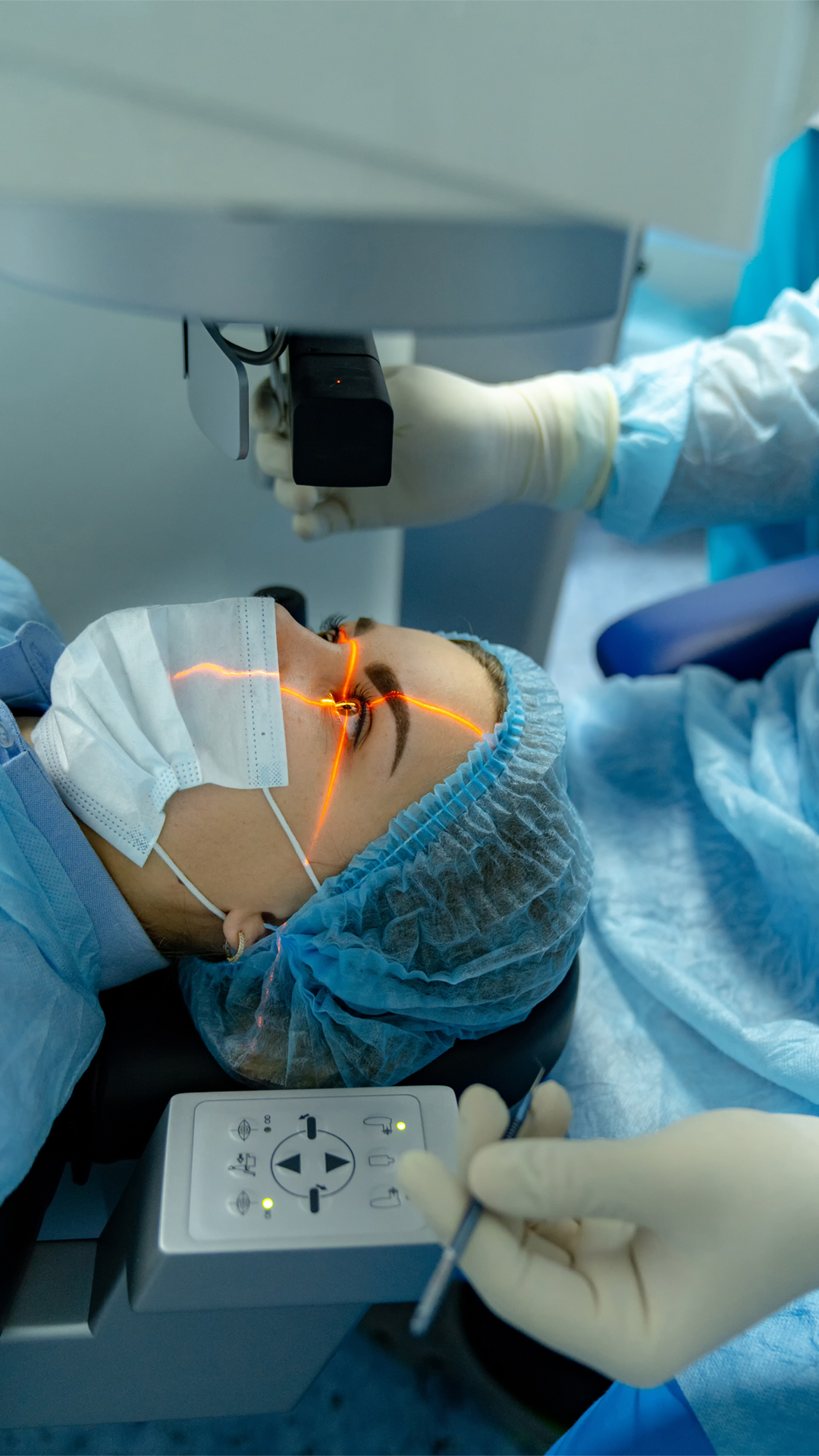
Specialized Ophthalmological Services
Certified and Experienced Specialist to assist in various eye diseases.
Consultation of:

Certified Ophthalmological Surgeon
Surgeries in Certified Hospitals

Outpatient (without surgery), with predictable and safe results in the hands of certified ophthalmologists with extensive experience and kind service, individualizing each case giving personalized treatment to obtain the best result for all patients.
for preventive, curative and ocular esthetics, for which different equipment and types of lasers are used, each having its specific precautions and indications.
The procedure is called Photothermoablative Iridoplasty, in which depigmentation of the superficial layer of the iris is performed with laser technology in several sessions and without surgery, achieving natural results.
There are two depigmentation phases that occur in the treatment:
There are currently different protocols, however, the recommended treatment protocol is as follows: Do 2 consecutive sessions every 30 days.
All patients must be over 18 years of age, the patient is asked for a couple of ophthalmological imaging studies prior to the appointment. Subsequently, a complete ophthalmological evaluation is performed to determine if you are a candidate for treatment.
It is permanent but is done in several sessions, the change is gradual and progressive. After the first sessions, some microscopic changes are noticed, which are always shown to the patients through photographs that are sent to them at the end of the session. Important and visible changes are observed after 8-10 sessions.
The treatment is designed specifically for Photothermoablative Iridoplasty, which makes it a safe and effective treatment. The side effects of the treatment reported so far are red eye, a slight increase in intraocular pressure and slightly blurred vision, all of these side effects disappear approximately 2 or 3 days after treatment.
Iris Color Laser is a specialized treatment, which is performed safely and effectively. However, some of the following complications may occur in any laser procedure. It is worth mentioning that none of Iris Color patients have presented them, but these are mentioned in the literature and are listed below:
Topical anesthetics, analgesics, ophthalmic lubricants, pilocarpine, tropicamide and/or phenylephrine.
During the treatment, the laser applied may cause the rupture of some of the iris vessels, if this happens we will temporarily suspend the treatment. This bleeding stops within minutes and resolves within days. After the resolution of bleeding, treatment can be restarted.
The low energy impacts of the laser could cause damage to the constrictor muscle or stimulation of the dilator muscle resulting in damage to the iris or its vascularization, causing an Urrets-Zavalia pupil (permanently dilated pupil) causing discomfort to intense light and blurred vision.
Almost all laser treatments for various diseases cause a temporary increase in intraocular pressure, Iris Color Laser is no exception. However, preventive treatment is indicated for this condition, thus avoiding potential damage.
The laser passing through the cornea could damage the corneal endothelium, resulting in inflammation of this organ, causing blurred vision. This may require a corneal transplant as management.
Due to the application of the laser and the patient's own conditions, it could happen that the iris becomes inflamed after the session, causing blurred vision and pain, in addition to greater damage to the iris, damage to the cornea and damage to the trabecular meshwork. This is avoided and controlled with anti-inflammatory treatment and is generally limited to a few days.
Excessive inflammation, whether due to the patient's own issues or due to not applying the indicated treatment after Iris Color Laser, can generate adhesions or synechiae on the trabecular meshwork or lens, which can cause increased intraocular pressure or distortion of the pupil shape (discorias).
Due to the patient's own conditions or lack of treatment, aberrant scarring of the iris could be observed, resulting in an affectation of the shape of the pupil (discoria). And because laser impacts, although almost zero probability, there is little chance of causing a hole in the iris.
During the application of Iris Color Laser, one of the shots could cross the iris, depositing the energy in the lens. That is why the patient's cooperation during the application of the treatment is very important. This can cause clouding of the lens (cataract) either over a short or long period of time. Which would require a surgical intervention (not urgent) to remove it.
The laser could cross the iris through the pupil or through a hole or thinning of the iris, directly damaging the retina, potentially causing scarring or hemorrhage in some areas of the retina. That is why the patient's cooperation during the application of the treatment is very important. In the case of injury, there is a risk of decreased vision of the damaged area temporarily or permanently.
Iris Color Laser has not produced repigmentation or darkening of the iris. However, it is reported in the literature that over-inflammation could occur, resulting in repigmentation or darkening of the iris.
